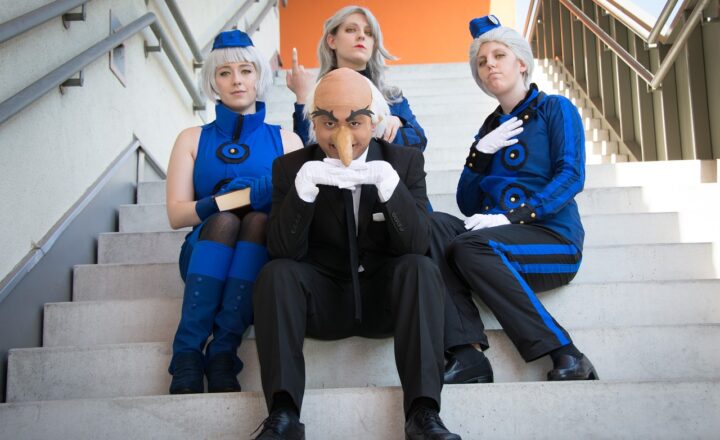How Fan Art and Fan Fiction Contribute to the Evolution of Comic Book Fandoms
November 11, 2024

Comic book fandom has evolved significantly over the decades, shaped not only by the creators and their stories but also by the passionate fans who engage with the material through various forms of creative expression. Among the most notable avenues for fan engagement are fan art and fan fiction. These two mediums not only enrich the fandom experience but also offer unique insights into the evolving landscape of comic book culture.
1. The Rise of Comic Book Fandom
The origins of comic book fandom can be traced back to the early 20th century when superhero comics began to gain popularity. Fans began to gather in small groups, sharing their love for characters and stories that resonated with them. Over time, conventions, clubs, and forums emerged, allowing fans to connect and share their passion.
In this context, fan creations like fan art and fan fiction started to become widely recognized. These creations allowed fans to express their interpretations and expand upon the narratives that intrigued them, leading to a dynamic and participatory culture within the comic book community.
2. The Role of Fan Art in Comic Book Fandom
Fan art plays a crucial role in enriching comic book fandom. It serves multiple purposes:
- Creative Expression: Fan art allows creators to reinterpret and reimagine their favorite characters and storylines visually. Artists often bring their stylistic flair and personal experiences into their work, resulting in a wide variety of artistic interpretations that celebrate the original material.
- Community Building: Fan art acts as a conversation starter within the fandom. Artists can share their works online through platforms like Instagram, DeviantArt, and Tumblr, attracting other fans who appreciate and discuss their creations. This exchange fosters a sense of belonging within the community and allows for collaboration among artists and enthusiasts alike.
- Cultural Commentary: Many fan artists use their art to comment on societal issues or to challenge existing portrayals of characters. For example, artists might create pieces that portray characters in different cultural contexts or address social justice issues, thus contributing to broader conversations within and beyond the fandom.
The impact of fan art can be witnessed not only within the fandom but also increasingly within the comic book industry itself. Many publishers have embraced fan art, incorporating it into their promotional materials, and even featuring fan artists in official collaborations.
3. The Influence of Fan Fiction on Comic Book Narratives
Fan fiction has also carved out an important space in comic book fandom, allowing fans to explore what-if scenarios and delve deeper into character motivations. Here’s how fan fiction is influencing the comics landscape:
- Expanded Universes: Fans often use fan fiction to expand upon existing storylines, adding depth and context to characters’ actions and relationships. This expansion creates a more intricate universe where fan narratives weave in and out of official canon, enriching the overall lore of beloved franchises.
- Character Development: Fan fiction often allows for a more intimate exploration of characters, side storylines, and relationship dynamics that might not be explored in the main comic series. Such engagement can lead creators to consider new directions for character development based on fan interpretations and interests.
- Filling Gaps and Resolving Conflicts: Many fans create narratives that address plot holes or character inconsistencies within official stories. This exploration can introduce fresh ideas and concepts that provoke thought within the larger fandom and can potentially inspire future comic book stories and character arcs.
Fan fiction has become an essential part of how stories are told within comic book culture. By providing a platform for exploration and creativity, it shapes how communities engage with their favorite characters and plots.
4. The Intersection of Fan Art, Fan Fiction, and the Comic Book Industry
Comic book publishers are increasingly recognizing the value of fan creations. Collaborative events, such as contests for fan art, have become commonplace, while fan fiction has inspired official spin-offs or adaptations. There are several key points to consider regarding this intersection:
- Feedback Loop: Fan engagement through art and fiction creates a feedback loop that informs comic book creators about their audience’s preferences. This can lead to both direct collaboration and a rise in stories that reflect the evolving expectations of readers.
- Inclusivity and Diversity: Fan art and fan fiction have been instrumental in pushing for inclusivity and representation within comic books. Fans often depict characters from diverse backgrounds or reimagine the dynamics between characters, offering a broader perspective that challenges traditional depictions in mainstream comics.
- Gatekeeping and Acceptance: The rise of digital platforms has democratized the creation and sharing of fan content, mitigating some of the gatekeeping traditionally present in fan communities. This inclusivity has led to a more welcoming environment for creators who may not fit the conventional molds established by the comic industry, fostering greater creativity and innovation in storytelling.
The comic book industry is responding, gradually embracing the creative ingenuity of its fandom. This evolution displays how fan expressions can lead to new avenues for storytelling, representation, and growth within the culture.
5. Conclusion: Shaping the Future of Comic Book Fandom
Fan art and fan fiction are not merely supplementary aspects of comic book culture; they are foundational to its evolution. By providing fans a platform to creatively engage with their favorite characters and narratives, fan creations have influenced not only how stories are told but also how fans connect with one another and the industry. In an era where digital platforms foster collaboration and sharing, the impact of fan art and fan fiction will continue to resonate, shaping the future landscape of comic book fandoms for years to come.
As the community continues to evolve, keeping an eye on the dynamics between fans and creators will illuminate the continued growth and transformation of what it means to engage with comic book culture in a meaningful and enriching way.






